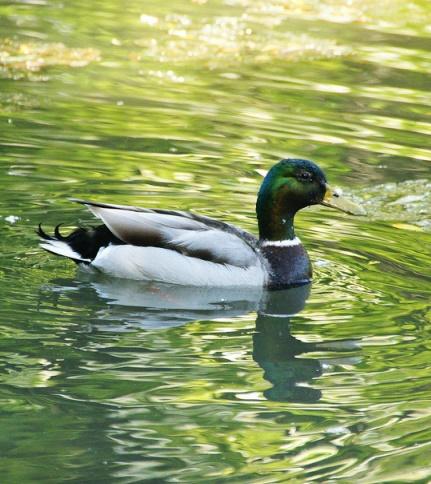The highly pathogenic H5N2 avian flu strain linked to several US poultry outbreaks in 2015 has been detected in a wild mallard in Montana as part of ongoing surveillance, US officials said, while the H5N8 strain has spread to more farms in Europe and was confirmed for the first time in Italy.
Same H5N2 strain hit US poultry in 2015
The United States Department of Agriculture's (USDA's) Animal and Plant Health Inspection Service (APHIS) said yesterday that the mallard was harvested by a hunter in Fergus County, Montana, and tested as part of routine surveillance. The H5N2 finding is the first since August when APHIS announced that similar testing revealed H5N2 in a wild mallard from an animal refuge near Fairbanks, Alaska.
The sample was initially tested at the Colorado State University Veterinary Diagnostic Laboratory, then sent to the USDA's National Veterinary Services Laboratory in Ames, Iowa, for further characterization.
"This appears to be one of the strains we saw during the outbreak in 2014 and 2015," Jack Shere, DVM, the USDA's chief veterinarian, said in the APHIS statement. "This finding serves as a powerful reminder that there is still avian influenza circulating in wild birds, and producers and industry need to continue to be vigilant about biosecurity to protect domestic poultry."
Last month the USDA launched "Defend the Flock," an educational campaign centered around best biosecurity practices for poultry producers, the poultry industry, and animal health officials.
The H5N2 outbreaks that hit chicken and turkey farms mainly in Midwestern states in 2015 affected 15 states and led to the culling of more than 43 million birds with an estimated $3.3 billion in economic losses.
First H5N8 detection in Italy; more spread in Europe
Animal health officials in Italy, meanwhile, recently confirmed highly pathogenic H5N8 from a Eurasian wigeon found dead in a lagoon in Friuli Venezia Giulia region, located in the northeast near the country's border with Austria, according to a notification posted on the Web site of the Istituto Zooprofilattico Sperimentale delle Venezie (IZSV).
Tests confirmed the finding on Jan 5, and Italy's addition to the list of countries affected by H5N8 was noted yesterday in a situation update from the United Nations Food and Agriculture Organization (FAO).
Elsewhere in Europe, the H5N8 virus hit more farms in Germany and Poland, with more wild bird detections reported in Finland, Germany, and Sweden, according to separate reports to the World Organization for Animal Health (OIE).
Germany yesterday reported 23 more H5N8 outbreaks to the OIE, 6 at farms and 17 involving wild birds. All of the farm outbreaks occurred in Lower Saxony state, five affecting fattening turkey operations and one striking birds at a layer facility. Of nearly 84,000 vulnerable poultry, the virus sickened about 12,000 poultry, killing 154 of them. The remaining birds were culled as a control step.
Poland reported 12 more poultry outbreaks, 6 on farms and 6 involving backyard birds, veterinary officials said yesterday in a report to the OIE. The outbreaks affected five different provinces and led to the culling of nearly 140,000 birds.
In related developments, separate reports to the OIE noted that Sweden reported two more H5N8 detections in wild eagles on the country's southeastern coast, and Finland reported a pair of detections in a duck and an eagle found in the southwestern part of the country.
See also:
Jan 9 USDA APHIS statement
Jan 10 IZSV outbreak updates
Jan 9 FAO H5N8 situation update
Jan 9 OIE report on German H5N8 outbreaks
Jan 9 OIE report on Polish H5N8 outbreaks
Jan 9 OIE report Swedish H5N8 outbreaks
Jan 10 OIE report on Finnish H5N8 outbreaks





















